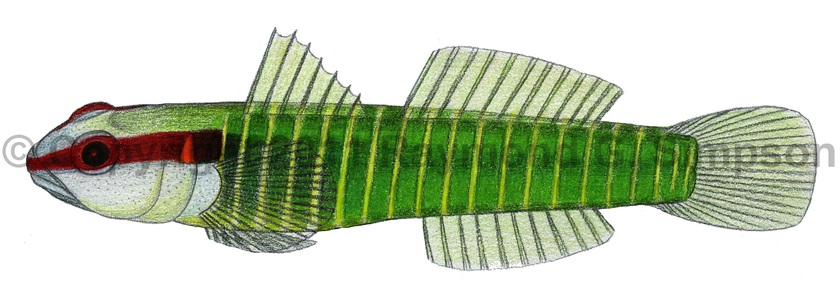
Common Name
Greenbanded Goby
Year Described
Steindachner, 1876
Identification
Dorsal Fin: VII, 11-12
Anal Fin: 9-10
Pectoral Fin: 19-21
Caudal Fin: 15 (branched), 6-8 unbranched on top and bottom
Pelvic fins fully united into circular disk. Body scaleless.
Color
Head pale yellowish, becoming abruptly dark green posterior to the pectoral base with 15-21 pale green bars. Head with a single bright red stripe from snout to opercular edge that becomes bright orange posteriorly. Fins yellowish with clear membranes.
Size
Maximum size to about 50mm SL.
Habitat
Shallow rocky areas of pitted limestone. Usually associated with sea urchins.
Range
Widespread in the Caribbean Sea from the Bahamas, Greater Antilles, Lesser Antilles, Curacao, Bonaire, Isla de Providencia, San Andres, Jamaica, and the Cayman Islands. Apears to be absent from the Gulf of Mexico and Florida, as well as the northern continental coast of South America.
References
Victor, B. C. 2010. The redcheek paradox: the mismatch between genetic and phenotypic divergence among deeply-divided mtDNA lineages in a coral-reef goby, with the description of two new cryptic species from the Caribbean Sea. Journal of the Ocean Science Foundation v. 3: 1-15.
Other Notes
Despite the near identical physical appearance between this species and T. panamensis, the mtDNA divergence between them is much greater (11.3%) than the divergence between the different looking T. rubrigenis and T. panamensis (3.3%). This shows color pattern is not a reliable indicator of relationship in this clade (Victor, 2010).